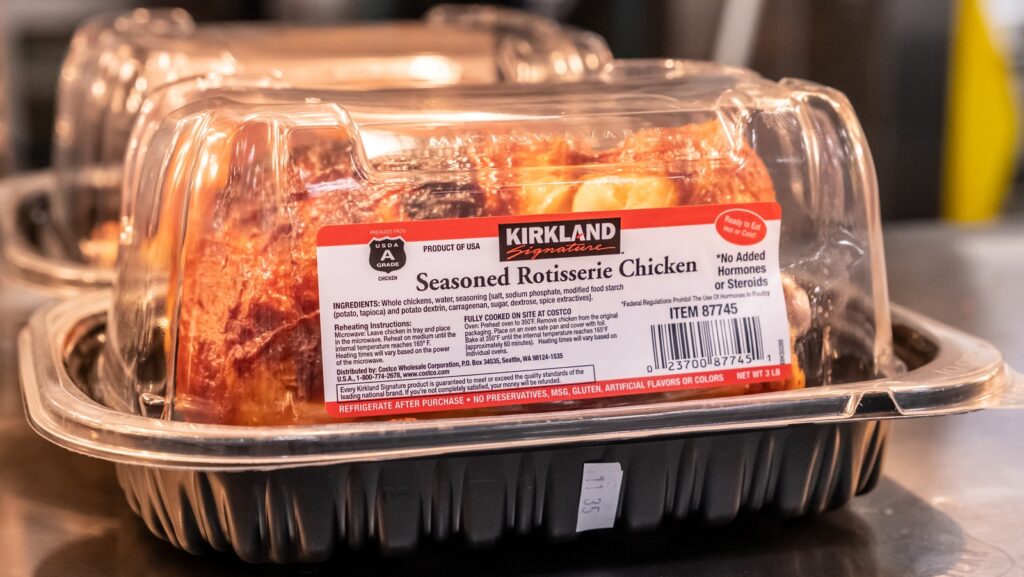Beyond simply providing customers with a quick dinner option, Costco’s famous rotisserie chickens are a mainstay of their sustainability initiatives and evidence of their dedication to reducing food waste. This article provides a thorough examination of what happens to Costco’s rotisserie chickens during their two-hour shelf life, showing how they go from the store floor to creative new recipes.
The Rotisserie Chicken Phenomenon at Costco
At a scrumptious $4.99 apiece, Costco’s rotisserie chickens are known for their quality and affordability. Despite being a loss leader—where the profit margin is slim or nonexistent—Costco sells approximately 100 million chickens annually, showcasing their popularity among customers seeking a convenient and budget-friendly meal option.
The Shelf Life Challenge of Two Hours
Costco’s kitchens produce rotisserie chickens in large quantities every day. These chickens are on display for purchase, and an important aspect of Costco’s policy states that they will be taken off the sales floor if they are not purchased within two hours. This rigorous schedule guarantees freshness and upholds Costco’s exacting standards for food quality.
Sustainable Practices in Practice: Reducing Food Waste
Costco is dedicated to cutting food waste in all aspects of its business. Even though they are no longer fit for direct sale after two hours, unsold rotisserie chickens are not thrown away. Rather, they are gathered and put to new uses using creative and environmentally friendly methods. Each chicken is carefully labeled with the time it was placed on the shelf, facilitating efficient removal once the two-hour mark passes.
Utilizing Rotisserie Chickens That Are not Sold
Unsold rotisserie chickens are used as the basis for a variety of Costco ready-to-eat food products rather than being thrown away. These chickens are transformed into ingredients for pre-made deli products, such as chicken salads, sandwiches, and other dishes sold both domestically in the U.S. and internationally.
Innovative Cooking Projects
Continually experimenting with new uses for unsold rotisserie chickens, Costco demonstrates their commitment to culinary innovation. These chickens serve as a primary ingredient in a diverse array of prepared foods, contributing to Costco’s ever-evolving deli offerings that cater to a wide range of tastes and preferences.
Environmental Effects and Customer Benefits
Repurposing unsold chickens reduces food waste while providing customers with a range of quick and freshly made meal options from Costco. In addition to improving customer satisfaction, this strategy lowers the environmental impact of disposing of food waste, which is in line with larger environmental objectives.
Upcoming Environmental Projects
Costco keeps looking for ways to improve its operations’ sustainability and cut down on food waste as customer awareness rises and sustainability stays a top concern. The way Costco handles unsold rotisserie chickens and other perishable goods in the future is probably going to be shaped by innovations in food repurposing and waste reduction techniques.
A Retail Sustainability Model
Costco’s management of unsold rotisserie chickens exemplifies a holistic approach to sustainability in retail. From initial preparation to innovative repurposing, Costco demonstrates a commitment to environmental stewardship while meeting consumer demand for high-quality, affordable food options. By transforming potential waste into culinary delights, Costco sets a precedent for responsible corporate practices that resonate positively with customers and stakeholders alike.
